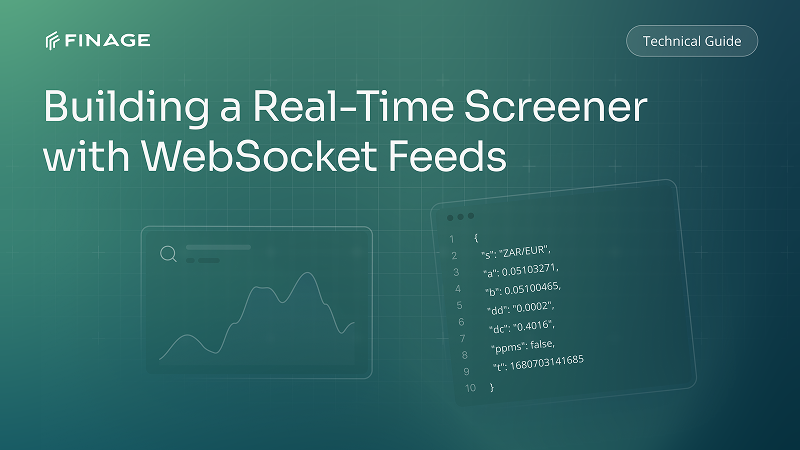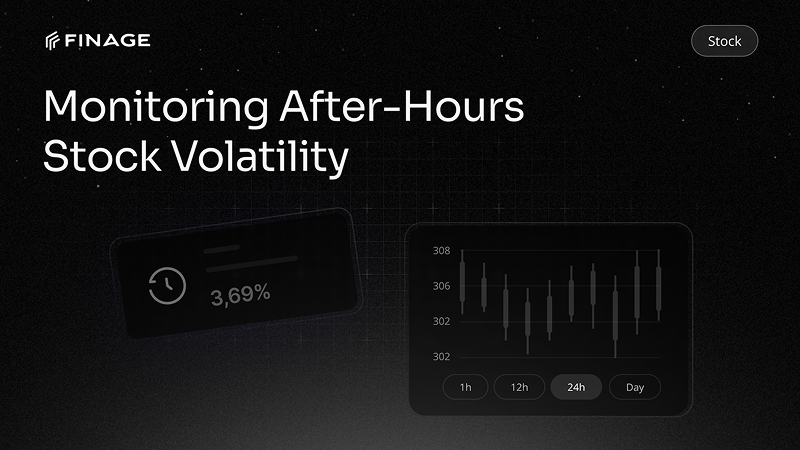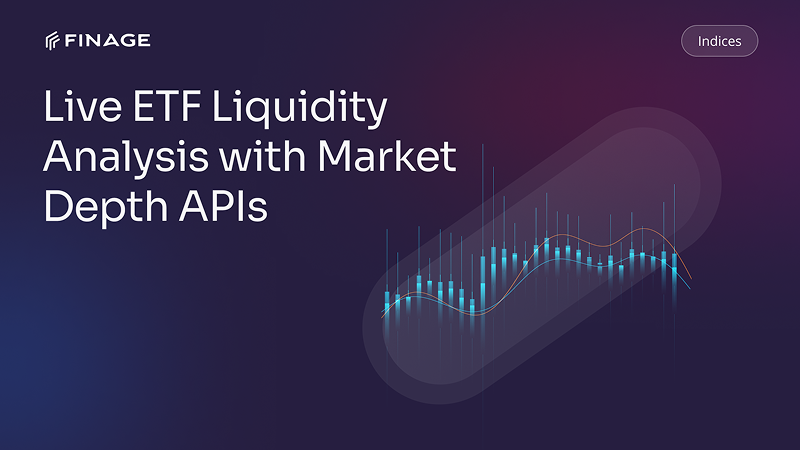WebSocket Stock API for Real-Time Market Data Streaming
8 min read • August 5, 2025
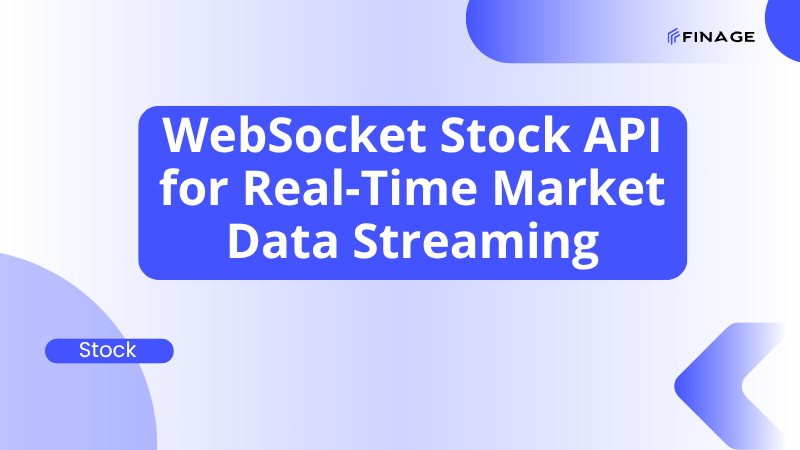
Introduction
In fast-moving financial markets, real-time responsiveness isn’t optional; it’s expected. Traders, portfolio platforms, and algorithmic engines all rely on one critical element: a continuous stream of accurate, low-latency data. Whether you're powering a trading dashboard or building event-driven systems, the foundation remains the same: a reliable source of real-time market data.
This is where Finage’s WebSocket Stock API stands out. Designed for developers and fintech teams who can’t afford lag, our WebSocket solution delivers streaming updates for every stock tick, quote, or trade as it happens, not after.
In this blog, we’ll explore how WebSocket-based streaming works, why it’s essential for modern trading apps, and how Finage gives you the performance and control you need to build at scale.
Table of Contents
- What Is a WebSocket Stock API?
- Why Real-Time Market Data Matters for Trading Apps
- Benefits of Using Finage’s WebSocket Stock API
- Streaming vs. Polling: What Developers Should Know
- How to Integrate WebSocket Market Data into Your Workflow
- Final Thoughts
What Is a WebSocket Stock API?
A WebSocket Stock API is a tool that delivers real-time stock market updates through a persistent connection between your application and the data provider. Unlike traditional APIs that require repeated requests to fetch new data, WebSocket APIs establish a continuous, low-latency stream of information the moment something changes, a price update, a trade, or a new bid/ask quote.
This makes WebSocket ideal for platforms that need to react instantly. Whether you're building a retail trading app, backtesting engine, or institutional-grade dashboard, WebSocket infrastructure ensures that your users always see what’s happening as it happens.
Finage’s WebSocket Stock API provides live tick-by-tick data across thousands of U.S. equities. As soon as an event occurs on the exchange, the data is pushed directly to your system, with no delay, no polling.
Key features include:
- Persistent real-time feed for quotes and trades
- Subscriptions based on symbols or markets
- Optimized for low-latency streaming across devices
In short, a WebSocket Stock API helps transform your system from a passive data fetcher to a proactive, streaming-first platform.
What Is a WebSocket Stock API?
A WebSocket Stock API is a tool that delivers real-time stock market updates through a persistent connection between your application and the data provider. Unlike traditional APIs that require repeated requests to fetch new data, WebSocket APIs establish a continuous, low-latency stream of information the moment something changes, a price update, a trade, or a new bid/ask quote.
This makes WebSocket ideal for platforms that need to react instantly. Whether you're building a retail trading app, backtesting engine, or institutional-grade dashboard, WebSocket infrastructure ensures that your users always see what’s happening as it happens.
Finage’s WebSocket Stock API provides live tick-by-tick data across thousands of U.S. equities. As soon as an event occurs on the exchange, the data is pushed directly to your system, with no delay, no polling.
Key features include:
- Persistent real-time feed for quotes and trades
- Subscriptions based on symbols or markets
- Optimized for low-latency streaming across devices
In short, a WebSocket Stock API helps transform your system from a passive data fetcher to a proactive, streaming-first platform.
Why Real-Time Market Data Matters for Trading Apps
Real-time market data is the heartbeat of every serious trading application. Delays, even fractions of a second, can mean missed opportunities, inaccurate pricing, or faulty execution. That’s why high-frequency trading desks, mobile brokerages, and portfolio trackers all demand the same thing: precision at speed.
Real-time market data allows your app to reflect the latest quote or trade without waiting for a refresh cycle. For traders, this means seeing the most recent bid/ask spread or price change the moment it occurs. For platforms, it means delivering a seamless, reactive experience that builds trust and engagement.
But speed isn’t the only factor. Accuracy, depth, and delivery method all matter, and that’s where Finage’s streaming APIs deliver a clear advantage.
For example, the Stock Last Quote API gives instant access to the most recent bid and ask prices for any listed U.S. stock. Combined with the WebSocket stream, you can build layered systems that respond instantly while staying fully aligned with market conditions.
A trading app is only as good as the data behind it. And when that data is real-time, accurate, and scalable, you're already ahead.
Benefits of Using Finage’s WebSocket Stock API
Choosing the right data pipeline isn’t just about speed; it’s about building on a foundation you can trust. Finage’s WebSocket Stock API is purpose-built for developers who need more than raw data. It’s designed to be fast, consistent, and easy to integrate into any trading infrastructure.
Here’s what sets it apart:
True Real-Time Delivery: Every trade and quote update is pushed as it happens, no polling, no lag.
Symbol-Level Subscriptions: Control your data flow by subscribing only to the stocks you need, reducing noise and saving bandwidth.
Cross-Platform Compatibility: Stream data directly to web, mobile, and backend systems with a consistent payload structure.
Low Latency Architecture: Designed to serve real-time data with minimal delay, even during peak trading hours.
Reliable Uptime & Performance: Finage infrastructure is engineered for scale, giving you peace of mind during volatile sessions.
Finage also offers unified access across multiple asset classes, so you can stream equities, forex, and crypto data through a single system. If your app evolves, your data provider doesn’t need to change.
For fintech teams building ambitious platforms, every millisecond and every decision counts. Finage is here to keep you in sync with the market.
Streaming vs. Polling: What Developers Should Know
If you’ve worked with market data before, you’ve likely encountered two common delivery methods: polling and streaming. Each has its place, but for most trading applications, streaming has become the clear winner.
Polling is simple: your app sends repeated requests to the API at fixed intervals (e.g., every second) to check if the data has changed. While this works for low-frequency applications, it introduces unnecessary load and latency. You’re always reacting to old data, even if it’s just milliseconds behind.
Streaming, on the other hand, flips the model. Instead of asking for updates, your system listens. The data provider pushes updates to you the instant something changes. No more guesswork, no more wasted requests.
Here’s a quick breakdown:
|
Feature |
Polling |
Streaming |
|
Data Freshness |
Delayed by the polling interval |
Immediate |
|
Server Load |
High (frequent requests) |
Low (persistent connection) |
|
Efficiency |
Redundant requests |
Event-driven |
|
Complexity |
Easier to implement |
Requires WebSocket infrastructure |
For developers building real-time trading dashboards, portfolio trackers, or automated bots, the choice is simple: streaming ensures that your system is always in sync with the market, especially when paired with a robust real-time market data source like Finage.
How to Integrate WebSocket Market Data into Your Workflow
Building a reliable, real-time trading system starts with a clean integration strategy. WebSocket connections may seem complex at first, but with the right architecture, they become one of the most efficient tools in your stack.
Here’s how to bring Finage’s WebSocket Stock API into your workflow:
Define Your Use Case
Are you building a live charting interface, a trading alert system, or a high-frequency trading engine? The way you handle the stream will vary depending on what the application needs in real time.
Establish the Connection
Finage provides a persistent WebSocket endpoint that connects your app to a live stream of stock market data. Once authenticated, you can subscribe to specific tickers using structured messages, keeping your feed clean and focused.
Listen and React
Your backend or client system should listen for data events, such as quote updates or trade executions. Each message arrives in real time, allowing you to trigger UI updates, log changes, or execute trades.
Handle Disconnections Gracefully
Network issues happen. Make sure your system is designed to detect dropped connections and resubscribe automatically. A resilient connection is just as important as a fast one.
Optimize for Scale
If you’re tracking hundreds of stocks, be smart with filtering and load balancing. Finage’s symbol-based subscription system makes it easy to limit what you receive to only what you need.
When integrated properly, WebSocket stock APIs don't just deliver data, they deliver market presence. Your app becomes a living interface to the financial world, updating in sync with every tick, every trade.
Final Thoughts
For any trading app, data is the engine, but real-time data is the fuel that keeps everything moving with precision. Whether you're building sleek dashboards, reactive trading systems, or analytics tools, the quality and immediacy of your market feed can define user experience and decision accuracy.
Finage’s WebSocket Stock API offers more than just speed. It delivers reliability, developer-friendly architecture, and true real-time streaming, all from a unified platform that supports multiple asset classes. You get fine-tuned control over your data stream, reduced latency, and a robust foundation to scale your application as your users and use cases grow.
If you’re ready to move beyond basic polling and into the world of responsive, intelligent trading apps, Finage is here to support every tick, quote, and trade as it happens.
Explore the docs, test your first stream, and start building smarter:
WebSocket Stock API Documentation
Relevant Asked Questions
- What is a WebSocket stock API used for in trading apps?
A WebSocket stock API delivers real-time stock price updates through a persistent connection. It's ideal for trading apps that need low-latency data, ensuring instant reaction to market changes without repeated API calls.
- How does Finage’s WebSocket API improve market data streaming?
Finage’s WebSocket API provides tick-by-tick updates with low latency, symbol-based subscriptions, and high uptime. It’s optimized for developers building responsive dashboards, bots, or trading platforms that require real-time accuracy.
- What’s the difference between polling and streaming for stock data?
Polling requires repeated requests to check for updates, causing delays and extra load. Streaming, like Finage’s WebSocket API, pushes updates instantly as they happen—offering faster, more efficient market data delivery.
Claim Your Free API Key Today
Access stock, forex and crypto market data with a free API key—no credit card required.
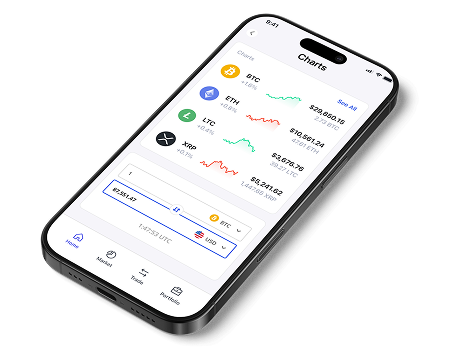
Stay Informed, Stay Ahead
Finage Blog: Data-Driven Insights & Ideas
Discover company news, announcements, updates, guides and more
